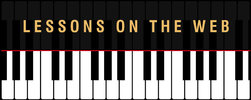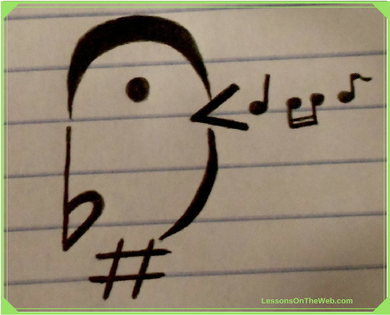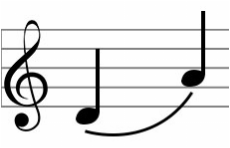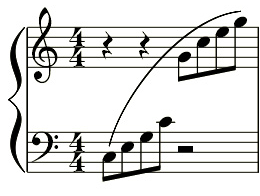|
Articulation may not be a very familiar word to many of us, but it's something that we actually do...(its a verb)...through our verbal communication every day. Think about the last time you were excited about something, and you just had to tell someone. I bet you didn't relay what you had to say in a soft, muted, monotonous tone; your voice tone probably went up and down, there were at least one or two loud words, and some of them were either shorter or longer than the others. It's interesting to observe how we communicate verbally with others, because that teaches us how to play our piano music with a variety of textures created by articulations. What exactly is articulation then? Articulation is a specific way we strike a piano key to make a desired sound with that note. Many times, the desired sound or effect is a type of accent on the specific note or group of notes. Sometimes, the articulation indicates a very smooth type of sound; totally opposite from an accented articulation. There are 4 main types of accented articulations. They look like this. 
When we use accented articulations in our verbal communication, we are usually expressing emotions as they help to emphasize the importance of what we're saying. We use more air to increase the loudness of our voices and we also use more muscles to emphasize our point with facial expressions. Notice how one word in a sentence like: "I did NOT", is emphasized. In Piano playing, if you had played the word not, most likely it would have had a "rooftop" accent over it, meaning it would be harder than a regular accent. Now while these articulation markings apply to just one note at a time, there are also articulation markings that indicate we are to play a group of notes a certain way. These are called Slurs, and they can be written over 2 or more notes. When we see slurs in our music, we know to play these notes together very smoothly, not lifting our fingers up in between them, like we do with individual notes. Here is what a slurs looks like in our piano music. The first one is a slur over just 2 notes, and the second one has 8 notes included in the slur, and combines both our left and right hands. A Slur written over a set of notes indicates that all of the notes are to played as a group and should remain connected to each other with no breaks in the sound in between the notes. Just flow/play smoothly from one note to the next.
It would be similar to saying a long phrase to someone without taking a breath. Practice Your Own Articulations with Scales A great way to learn about articulations is to try them out on your own while playing an easy scale that you already know very well. Even if you don't know one really well yet, you can actually use your articulation practicing to learn your scales even more! Pick your favorite scale, and decide to practice one type of articulation each day. This way, you won't feel overwhelmed by them all, unless you want to try all of them in one day. :)
When you decide to practice slurs, do it in the same way that you did your different accent markings, but combine groups of notes together and play them very smoothly this time. You can start with just slurring 2 notes together, and after playing the 2 slurred notes, lift your fingers quickly and get ready for the next 2 slurred notes. This way, you will definitely hear the difference in sound from the accented notes. Try slurring different amounts of grouped notes such as 4 or 8 notes at a time. This is a bit more challenging, but fun as well! Learning these different articulations will really give some "umph" to your piano playing as you are able to express more and be more creative with your tonal textures and nuances. Stay Tuned to LessonsOnTheWeb to learn much more and achieve your dreams of playing the piano! |
AuthorMost blogs written by Archives
June 2020
Categories
All
|




 RSS Feed
RSS Feed